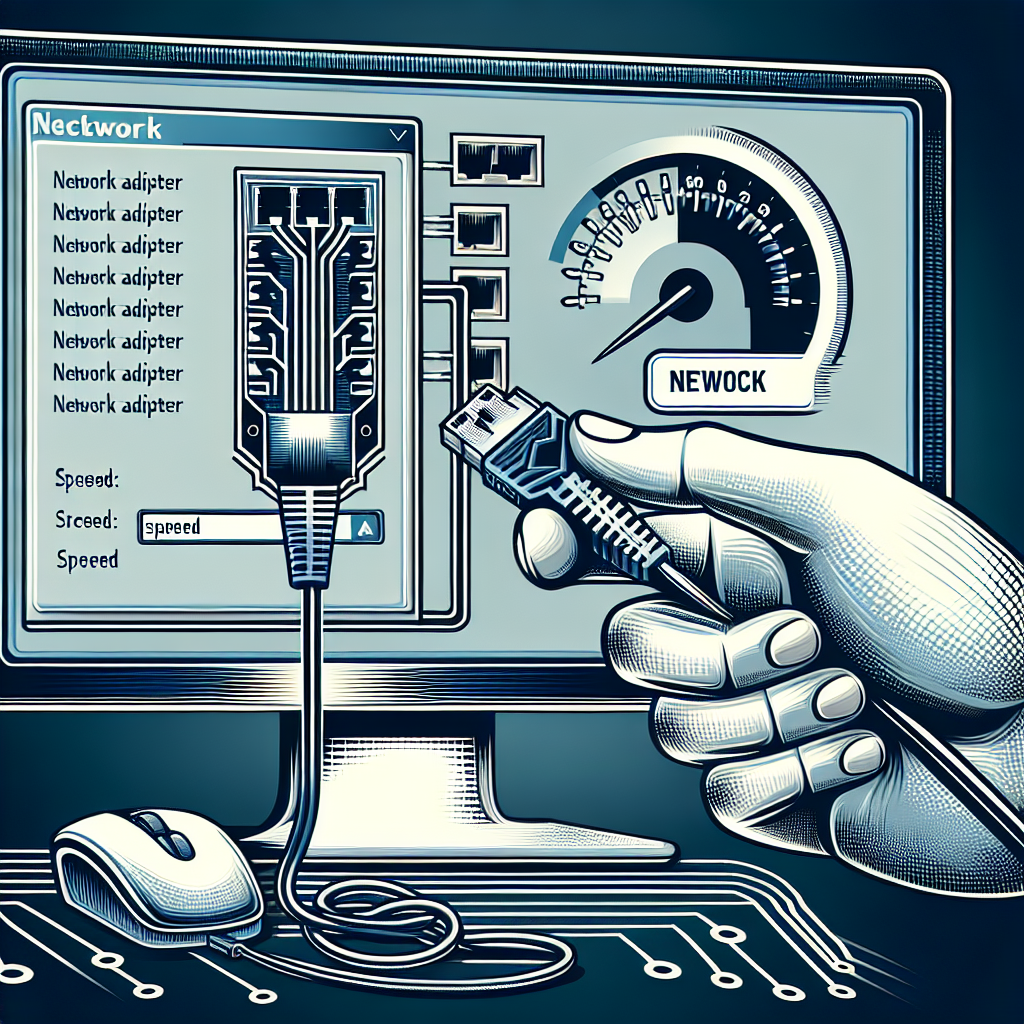How do you check the speed of a network adapter?
Understanding the speed of your network adapter is crucial for diagnosing internet connectivity issues, ensuring optimal performance, and making informed decisions about upgrades. A network adapter’s speed determines how quickly data is transferred to and from your device, impacting everything from browsing to streaming and online gaming.
Importance of Knowing Your Network Adapter Speed
Checking the speed of your network adapter allows you to:
- Identify potential bottlenecks in your network
- Optimize your internet connection for better performance
- Ensure your hardware meets your service provider’s speed requirements
- Troubleshoot connectivity issues more effectively
- Make informed decisions about hardware upgrades
Methods to Check Network Adapter Speed
1. Using Windows Settings
Windows offers a built-in utility to check the speed of your network adapter:
- Press Windows + I to open the Settings app.
- Go to Network & Internet.
- Select Status from the left-hand menu.
- Click on Change adapter options.
- Right-click on the network adapter and select Status.
- In the General tab, you’ll see the speed listed.
2. Using Command Prompt
The Command Prompt offers a quick and efficient way to check your network adapter speed:
- Press Windows + R to open the Run dialog box.
- Type cmd and press Enter.
- Type
netsh wlan show interfacesand press Enter. - Look for the Receive Rate (Mbps) and Transmit Rate (Mbps) fields.
3. Using PowerShell
PowerShell provides another method to verify the adapter speed:
- Press Windows + X and select Windows PowerShell (Admin).
- Type
Get-NetAdapter | Select-Object Name, LinkSpeedand press Enter. - The output displays the network adapter name and its link speed.
4. Using Third-Party Tools
Several third-party tools can help you check the network adapter speed:
- Speedtest.net: A web-based speed test to measure internet speed.
- LAN Speed Test: A downloadable tool that measures file throughput on your local network.
- NetSpot: A Wi-Fi analysis tool offering comprehensive details on network performance.
Factors Affecting Network Adapter Speed
Several factors can impact the speed of your network adapter:
- Adapter Type: Wired adapters generally offer faster and more stable speeds than wireless ones.
- Network Infrastructure: Quality and modernity of your router, switches, and cabling.
- Interference: Wireless signals can be affected by physical barriers, electronic devices, and other network traffic.
- Hardware Limitations: Older devices may not support the latest speed standards.
- Service Provider Speed: The maximum speed your ISP provides can limit your network adapter’s output.
Interpreting Network Adapter Speed Results
Knowing how to interpret the speed results is essential:
| Speed | Meaning |
|---|---|
| 100 Mbps | Standard speed for Ethernet connections, suitable for basic internet use. |
| 1 Gbps | Common for modern wired networks, ideal for high-speed internet and streaming. |
| 10 Gbps | Advanced networks, often used in professional settings requiring high data throughput. |
Troubleshooting Network Adapter Speed Issues
If the speed of your network adapter appears below expectations, consider the following troubleshooting steps:
- Update Drivers: Ensure that your network adapter drivers are up-to-date.
- Check Cabling: Verify that Ethernet cables are properly connected and not damaged.
- Optimize Router Placement: Position your router centrally to avoid signal interference.
- Reduce Connected Devices: Limit the number of devices connected to your network to reduce congestion.
- Contact ISP: Get in touch with your internet service provider to ensure there are no external issues.
Conclusion
Checking the speed of your network adapter is a vital part of maintaining a robust and efficient home or office network. By understanding and utilizing the various methods discussed, you can effectively manage, troubleshoot, and optimize your network performance.

